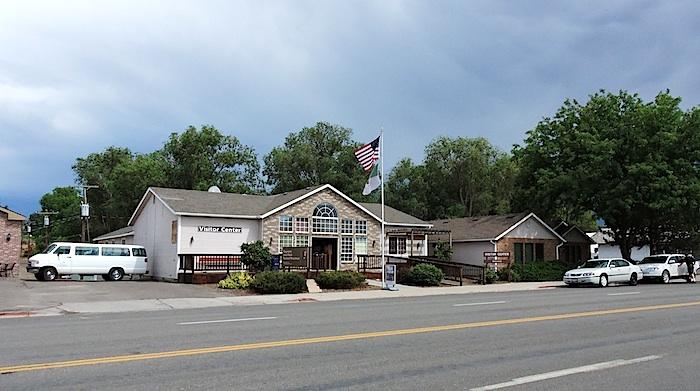Hagerman, Idaho, is a very small town. I think the sign said something like 470 people live there. About halfway down Main Street, right across from the high school and next door to a storefront church, you will find the visitor center for Hagerman Fossil Beds National Monument. Be careful. You might miss it and have to go around the block.
There is no parking lot to speak of. But that’s all right because there don’t seem to be a lot of visitors. Even so, a visit to Hagerman is one you might want to make. It’s not far off Interstate 84. It nestles in the valley of the Snake River. A little way to the east you’ll find the Thousand Springs, where what seems like a thousand springs of water gush forth from cliffs of volcanic lava and pour into the mighty Snake.
But if you want to see fossils in the ground where they were found, you won’t. The fossil quarry has been backfilled to protect remaining fossils. Instead, you’ll find a representative few in the single tiny room that makes up the visitor center’s exhibit hall. The visitor center, you see, is temporary. Y’might even say permanently temporary. A second room that could be called The Auditorium is where The Twenty Minute Video is shown. The monument is 25 years old, but the VC is temporary and, according to some staff members there, it probably always will be.
“There’s lots of talk. But that’s all,” says one of them about both Hagerman and Minidoka, which is administered by the crew at Hagerman.

The visitor center for Hagerman Fossil Beds National Monument blends into main street in Hagerman/Lee Dalton
The national monument itself is actually about five miles from the VC. Across the Snake. But there are a couple of overlooks where you can pull out your binoculars. One of them interprets the fossils, the other tells the story of the Oregon Trail that passed right though what is now the monument.
Hagerman’s visitor center tells two stories. A story of fossils and a story of the trail that was one of the nation’s first transcontinental highways.
What strikes me most about Hagerman is that inside the visitor center there are none of the exhibits bearing the trademark handiwork of the National Park Service's interpretive staff at Harpers Ferry, West Virginia. Except for a reproduction of the Hagerman horse and a mammoth skull, almost everything is home made. Produced in house by the monument’s staff, it’s a testimony to the dedication of the people who work here. Even the video may have been produced locally. I didn’t think to ask, and now it’s too late. But it’s good, although it lacks the polish and adornments of one produced by the elves of Harpers Ferry. One exhibit bears a label that tells us it was made by Hagerman’s fourth-grade class.
Exhibits are very kid-friendly. I find myself wishing I was a kid so I could start digging in the sand to find some fossils, or dress up in some of the assorted clothing hanging on the wall so I could look like a pioneer on the trail. Even though Catherine Russell, the ranger who welcomed me both times I wandered in off the street, tells me that parents sometimes push their kids out of the way so they can dig for fossils, I refrain.
But I do learn that Hagerman has a staff of about ten. All the rangers are seasonals. There is a permanent superintendent, a couple of maintenance workers, a paleontologist, and an education specialist. But that’s about it.
I don’t go out to the quarry overlook because I was there two years ago. That time I visited on a Wednesday and found the visitor center closed. Out at the Oregon Trail overlook, however, I found two rangers telling a bunch of fourth-grade kids the story of the trail. One of them explained that two weekdays were reserved so the small staff could do school programs during the spring field trip season.
I leave Hagerman much as I left Minidoka National Historic Site. Wondering. Wondering if this place is one of those parts of the National Park System that really belongs. Again, what is its legislative history? Who pushed for it to be included? Can the Park Service afford it? Just down the street is a county historical museum (closed when I was there). Could the county take over Hagerman? Could the Idaho state university system? Who?
I don’t know.
But what might have happened had it not been protected as a monument? Would we now be visiting some private tourist trap to dig for fossils or buy some to take home?
Again, I don’t know.



 Support Essential Coverage of Essential Places
Support Essential Coverage of Essential Places






